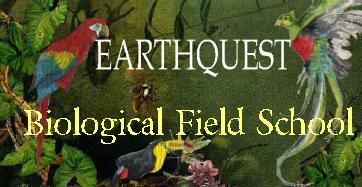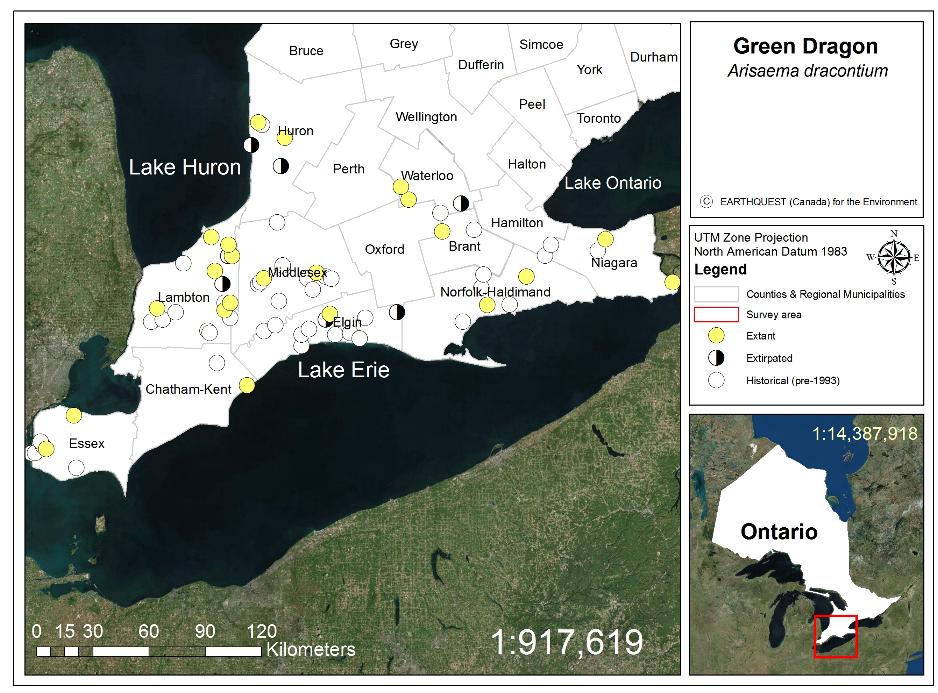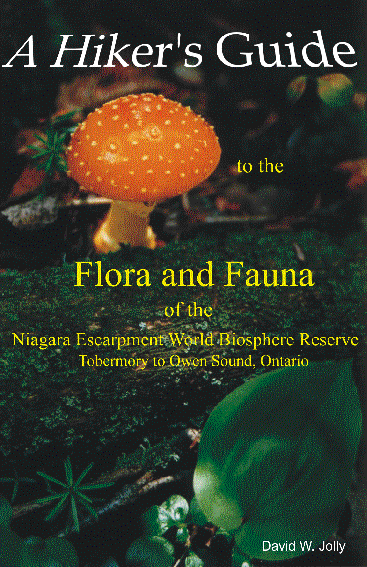
Spring | |||||||||||
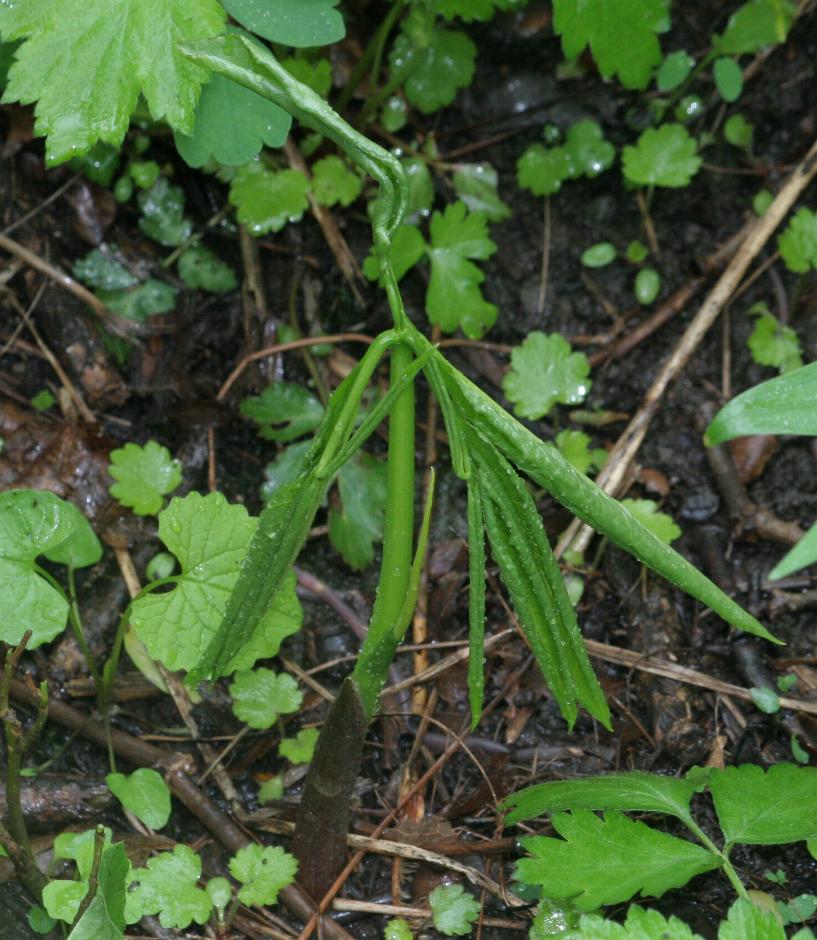 |
Emergence period: May 8 - 26 | ||||||||||
Summer | |||||||||||
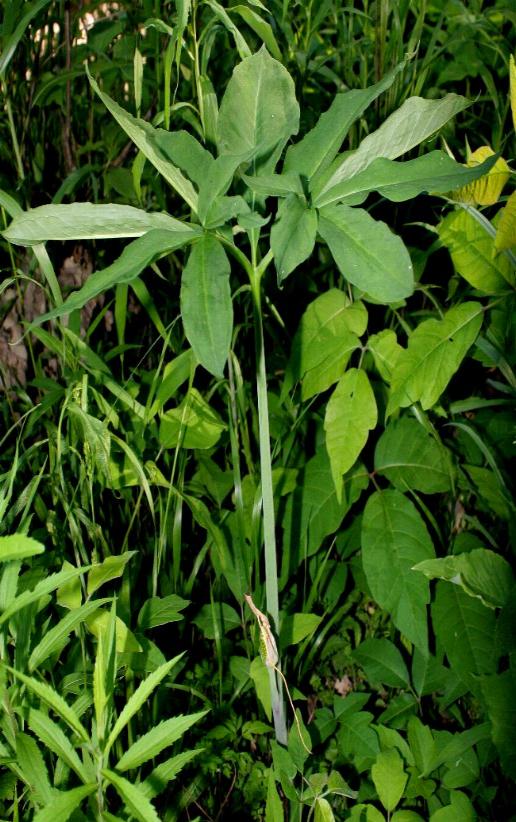 |
Flowers Flowering period: May 23 - June 7 (EARTHQUEST 2015). Flowers: male (above); female (below) 10 cm. Spathe 15 cm 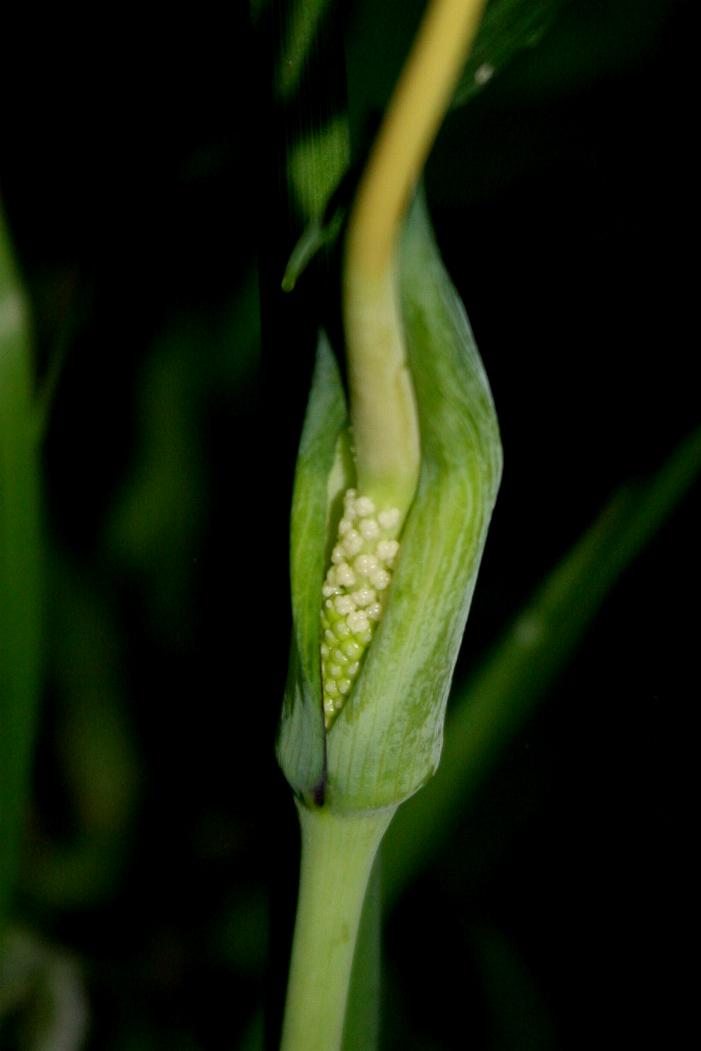 |
||||||||||
Fall | |||||||||||
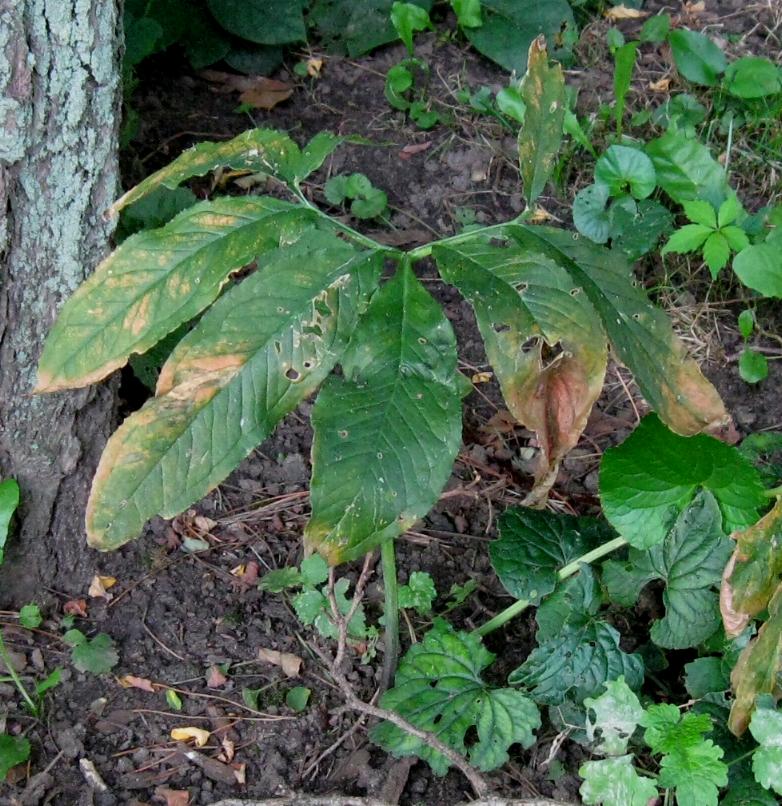 |
Fruit (non viable)
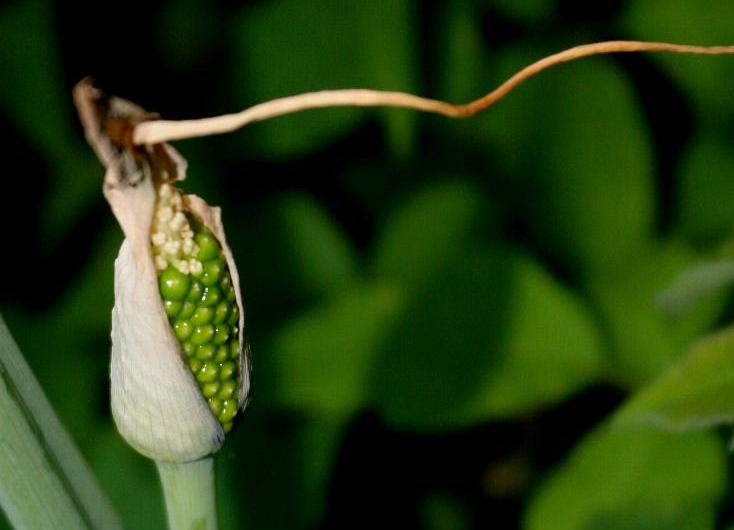 |
||||||||||
Winter | Corm
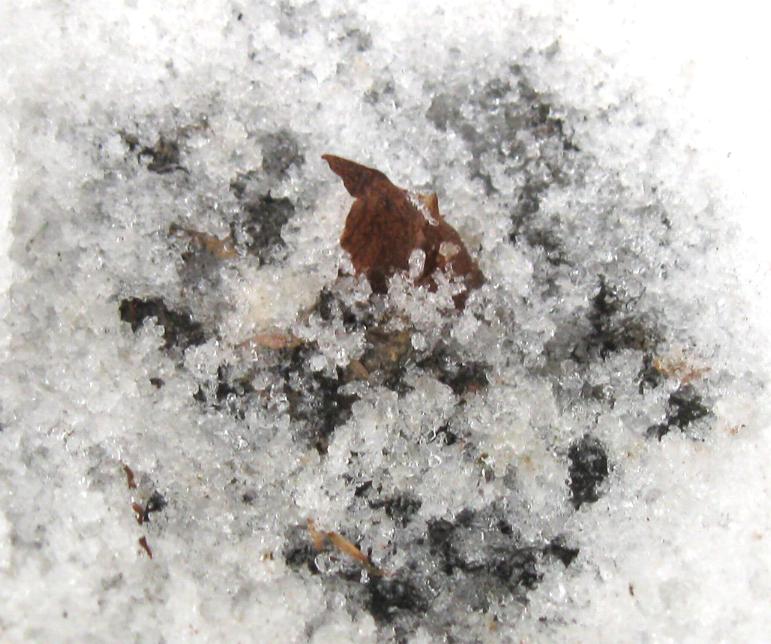
Flowering period: Most plants emerge from dormant corms in the first week of May up to May 26th, flowering from May 23rd to June 7th, with some upland plants persisting later in June. Young plants may completely die back to the corm by August 21st (EARTHQUEST 2015b, Jolly 2015a).
5 Second Rule Identification: Large compound leaf that is compound and palmately divided in a U-shaped pattern with a long spadix on flower.
Biology and Ecology: The reproductive cycle seems to be habitat specific, dependent on quality and other variables such as disturbance and flood events. Plants can change sex in response to habitat needs; large, healthy plants possess male and female flowers (monoecious), while smaller, damaged plants may only have male staminate flowers, which may not produce fruits. Vegetative shoots from parent plants are also produced, likely in smaller damaged plants, which are physiologically dependent. Little is known about what kind of insect pollinators contribute to propagation, but thrips (Heterothrips spp.) and fungus gnats (Mycetophylla spp.) seem to be the main pollinators. Dave Jolly observed an Ear wig species (Dermaptera spp.) that made tear drop shaped openings left from the receding flower pedicel within 2 Green Dragon stems in 2014 (Jolly pers. obs.).
Population Size: It is believed that there are between 60 and 80 natural occurrences of Green Dragon in Ontario (Donley et al. 2013). Rothfels and Smith (2003) provide an estimate of approximately 11,000 plants, with 287 producing viable fruit. No recent population estimates have been made, but Ruthven National Historic Site staff initiated a monitoring program after an EARTHQUEST (Canada) for the Environment student rediscovered Green Dragon on their property in 2010.
Habitat & Soils: This riparian floodplain plant prefers moist sandy or loamy soils within damp woods along riverbanks, streams and creeks. Although general soil type is given in the Ontario Management Plan, more detailed information is needed on Ecological Land Classification vegetation type parameters to ascertain ecosite preferences for Ontario populations. Middlesex county populations were found growing in Willow Mineral Deciduous Swamp Type (SWDM4-1) (Jolly pers. obs.) and Fresh – Moist Green Ash - Hardwood Lowland Deciduous Forest Type FODM7-2) (Jolly 2015a). A Haldimand county population was found in Green Ash Mineral Deciduous Swamp (SWDM2-2) (Jolly 2015a).
Threats: The Green Dragon is facing habitat loss, degradation, fragmentation and isolation as the major culprits to population declines.
Recovery: Currently, no recovery strategies have been recommended outside the Ontario Management Plan compiled by staff of Carolinian Canada Coalition in 2013. Please refer to Weblink; "Management Plan for the Green
Dragon (Arisaema dracontium) in Ontario". A national recovery team has been designated.
Biometrics: A relatively tall plant, compared to other members of the Arum family, with individuals ranging in size from 12 - 90 cm in height. A single leaf is borne at the end of a stem or stalk, resembling a palmately compound arrangement with 5 - 21 leaflets; larger, healthier plants contain more leaflets. Leaves are typically 10 - 23 cm wide by 23 - 36 cm long. Flowers arise within 10 cm of the bottom of the stem on long stalks which may be 10 cm long. Spathe turns yellow after flowers mature.
Environmental Protection: This species received some federal protection after being designated special concern in 1984 by COSEWIC as a Schedule 3 plant under the federal Species at Risk Act. Scheduled to be reassessed as a candidate Schedule 1 species. Provincially, Green Dragon received protection by the Ontario Ministry of Natural Resources and Forestry in 1988. It also receives protection under the 2007 provincial Endangered Species Act. One population in Middlesex county resides within the St. Clair Region Conservation Authority regulation limit adjacent to a golf course near the Strathroy Conservation Area. Most other populations are on public or private land.
References:
1. Donley, R., J.V. Jalava and J. van Overbeeke. 2013. Management Plan for the Green Dragon (Arisaema dracontium) in Ontario. Ontario Management Plan Series. Prepared for the Ontario Ministry of Natural Resources, Peterborough, Ontario. vi, 43 p.
Distribution: Confined to Brant, Chatham-Kent, Essex, Middlesex, Norfolk counties and Niagara region in Ecoregion 7E; Huron, Lambton and Wellington counties in Ecoregion 6E.
| ||||||||||
 EARTHQUEST (Canada) for the Environment
EARTHQUEST (Canada) for the Environment
